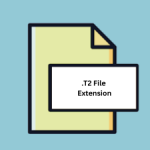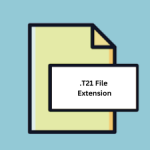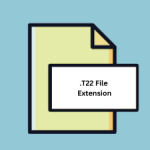.SNAPSHOT File Extension

VMware ThinApp Snapshot File
| Developer | VMware |
| Popularity | |
| Category | Data Files |
| Format | .SNAPSHOT |
| Cross Platform | Update Soon |
What is an SNAPSHOT file?
SNAPSHOT files, identified by the .SNAPSHOT extension, are integral components of VMware ThinApp, a leading application virtualization solution.
These files encapsulate a snapshot of an application’s state at a specific moment in time, including its configuration, registry settings, and file system structure.
Essentially, SNAPSHOT files serve as snapshots of virtualized applications, facilitating their seamless deployment and execution across various platforms and environments.
More Information.
Initially introduced as Thinstall in 1999 by Jitit, Inc., the technology was later acquired by VMware in 2008 and rebranded as VMware ThinApp.
The primary objective behind ThinApp was to revolutionize application delivery by decoupling software from the underlying operating system. SNAPSHOT files played a pivotal role in this endeavor, serving as the building blocks for portable, virtualized applications.
Origin Of This File.
The genesis of SNAPSHOT files can be traced back to the development of VMware ThinApp, formerly known as Thinstall. VMware ThinApp emerged as a pioneering solution for simplifying application deployment and management within enterprise environments.
By encapsulating applications into standalone executables, ThinApp enabled organizations to eliminate software conflicts, streamline updates, and enhance compatibility across diverse operating systems.
File Structure Technical Specification.
SNAPSHOT file comprises a comprehensive snapshot of an application’s runtime environment. This includes registry entries, file system modifications, DLL registrations, and other configuration settings necessary for the application’s functionality.
SNAPSHOT files are typically stored in a proprietary format optimized for rapid deployment and execution within virtualized environments.
While the internal structure of SNAPSHOT files remains proprietary to VMware, they are designed to be lightweight and efficient, ensuring minimal overhead during application virtualization.
Additionally, SNAPSHOT files may include metadata and versioning information to facilitate compatibility and version control within ThinApp environments.
How to Convert the File?
Converting SNAPSHOT files to alternative formats or platforms may be necessary in certain scenarios. While direct conversion tools or methods for SNAPSHOT files are not readily available due to their proprietary nature, alternative approaches can be explored:
- Repackaging: Utilize VMware ThinApp’s packaging tools to repackage the application into a different format or platform, such as MSI or EXE installers.
- Manual Migration: Manually recreate the application’s configuration and settings on the target platform, leveraging native installation methods or virtualization solutions.
- Third-Party Solutions: Explore third-party virtualization or packaging solutions that offer compatibility with SNAPSHOT files and alternative formats.
Advantages And Disadvantages.
Advantages:
- Portability: SNAPSHOT files enable the encapsulation of applications into standalone executables, eliminating dependencies on specific system configurations or libraries.
- Compatibility: Virtualized applications packaged as SNAPSHOT files can be seamlessly deployed across diverse operating systems and environments, enhancing compatibility and reducing deployment complexity.
- Isolation: By encapsulating applications within SNAPSHOT files, ThinApp ensures isolation from the underlying operating system, minimizing conflicts and enhancing security.
- Efficiency: SNAPSHOT files are designed to be lightweight and efficient, optimizing resource utilization and minimizing performance overhead during application execution.
Disadvantages:
- Resource Consumption: While SNAPSHOT files are designed to be efficient, virtualized applications may incur additional resource overhead compared to natively installed counterparts.
- Complexity: The creation and management of SNAPSHOT files within ThinApp environments may require specialized knowledge and expertise, particularly in large-scale deployment scenarios.
- Dependency Management: Virtualized applications packaged as SNAPSHOT files may still rely on external dependencies, necessitating careful management and version control to ensure compatibility.
How to Open SNAPSHOT?
Open In Windows
- Install VMware ThinApp on a Windows system and use the ThinApp Setup Capture utility to open and manage SNAPSHOT files.
Open In Linux
- Utilize VMware ThinApp in conjunction with Wine or other compatibility layers to execute SNAPSHOT files on Linux-based systems.
Open In MAC
- Although VMware ThinApp is not natively supported on macOS, SNAPSHOT files can be executed within virtualized Windows environments using solutions like VMware Fusion or Parallels Desktop.













